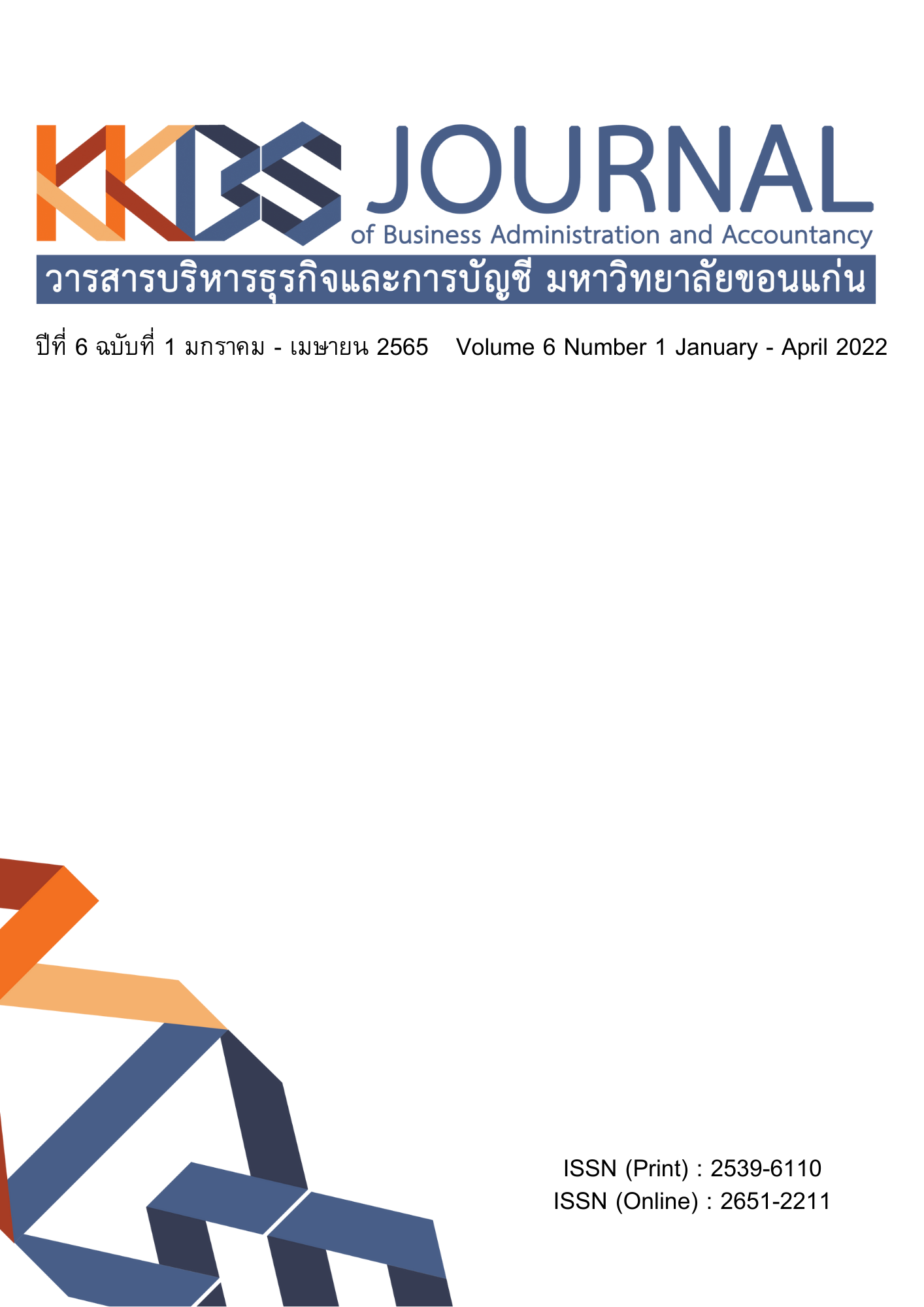Measuring the Return and Volatility of Cryptocurrencies: A Case Study of Thailand
Main Article Content
Abstract
Cryptocurrencies are financial assets. Address on the public transaction system that works without intermediaries Based on a Blockchain that connects computers through Peer-to-Peer network. Resulting in a highly secure system and editing data in the Blockchain is difficult. This research aims to estimate returns and volatility from investing in Bitcoin using The ARCH (1), GARCH (1,1), TGARCH (1,1), and EGARCH (1,1) models. Based on the Thai cryptocurrency market and describe which model that can estimate the most appropriate volatility. The study found that the return of bitcoins from the log return method average daily return was 0.03%, while the weekly mean yield was 0.43%, the monthly mean yield was 3.73% and the yearly average was 11.42%. This means that the holding time of the cryptocurrency has an effect on the return. And EGARCH (5,5) is the most suitable model to easure the volatility of Bitcoin in the Thai market from 2018 to 2020.
Article Details

This work is licensed under a Creative Commons Attribution-NonCommercial-NoDerivatives 4.0 International License.
The articles published in the journals are the authors' opinions, not the opinion of the editorial team or administrative staff. The articles published is copyright of the Journal of Business Administration and Accounting, Khon Kaen University.
References
Aey, D. (2016). Comparison of the Bitcoin price forecast results using the Neural network regression and genetic programming. Chonburi: Faculty of informatics, Burapha University. (In Thai)
Arnat, L. (2018). Evolution of money from Cowries to Cryptocurrency. Bangkok: Great Idea
Cermak, V. (2017). Can Bitcoin become a viable alternative to Fiat Currencies? An empirical analysis of Bitcoin's volatility based on a GARCH model. New York: Skidmore College.
Chu, J., Chan, S., Nadarajah, S. & Osterrieder, J. (2017). GARCH modelling of cryptocurrencies. Journal of Risk Financial Management, 10(4), 1 – 15
Floyd, D. (2020). How bitcoin works. Retrieved July 8, 2020, from https://www.investopedia.com/news/how-bitcoin-works
Gyamarah, S. (2019). Modelling the volatility of Bitcoin returns using GARCH models. Quantitative Finance and Economics, 3(4), 739 – 753
Mapperson, J. (2020). Could Bitcoin Trading volume really 100X in Four Years? Retrieved July 8, 2020, from https://cointelegraph.com/news/could-bitcoin-trading-volume-really-100x-in-four-years
Maria Caporale, G. & Zekokh, T. (2019). Modelling volatility of cryptocurrencies using Markov Switching GARCH models. Research in International Business and Finance, 48, 143 – 155.
Mintra, C. (2018). Perceptions and Attitude towards the digital Bitcoin currency in Thailand. Journal of Business Administration and Social Sciences Ramkhamhaeng University, 1(3), 83 – 97. (In Thai)
Nahathai, S. (2017). Regulatory measures for cryptocurrencies and the application of Thai laws with cryptocurrencies: Bitcoin. NBTC Journal, 1(2), 1 – 24. (In Thai)
Phongsakorn, P. (2017). Analysis on the price volatility of Bitcoin. Bangkok: Faculty of Business Administration, Bangkok University. (In Thai)
Pimthanya, K. (2018). Bitcoin a virtual currency of the future. Bangkok: The Secretariat of the House of Representatives. (In Thai)
Somjai, F. & Kanokwan, K. (2019). Financial innovation and technology in Cryptocurrency in a Bangkok Metropolitan Precinct. Journal of Economics and Management Strategy, 6(2), 55-71. (In Thai)
Sophin, T. & Wanrapee, B. (2018). Factors affecting the price of cryptocurrency. Bangkok: Proceeding UTCC Academic Day 2018. (In Thai)
Thammarak, M., et al. (2018). Central Bank Digital Currency another evolution of money. Focused and Quick (FAQ), 124. (In Thai)
Thitiporn, T., et al. (2018). Mechanism of the Bitcoin’s operation. Burapha Journal of Business Management, 7(1), 100-110. (In Thai)


